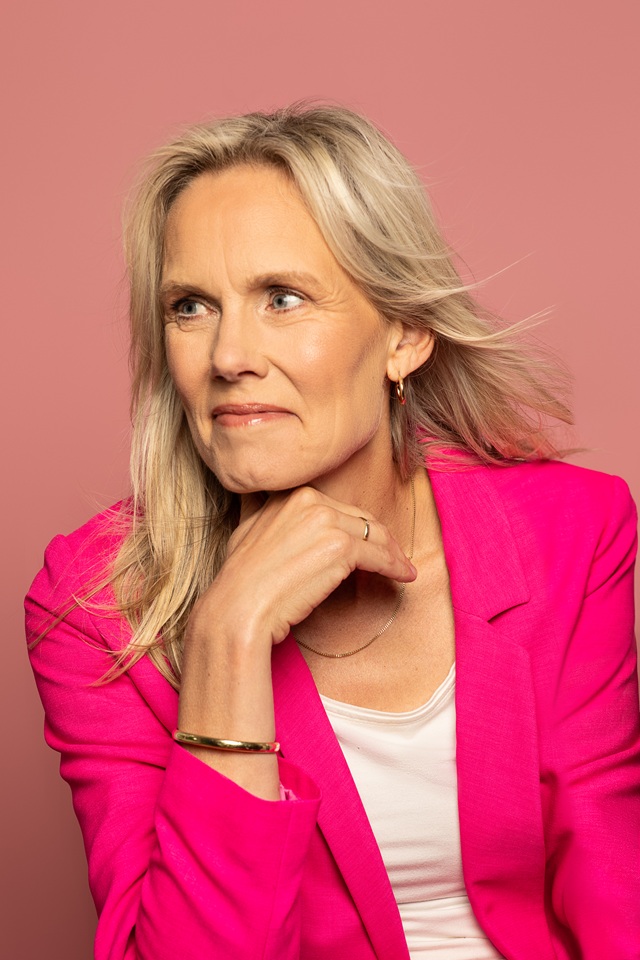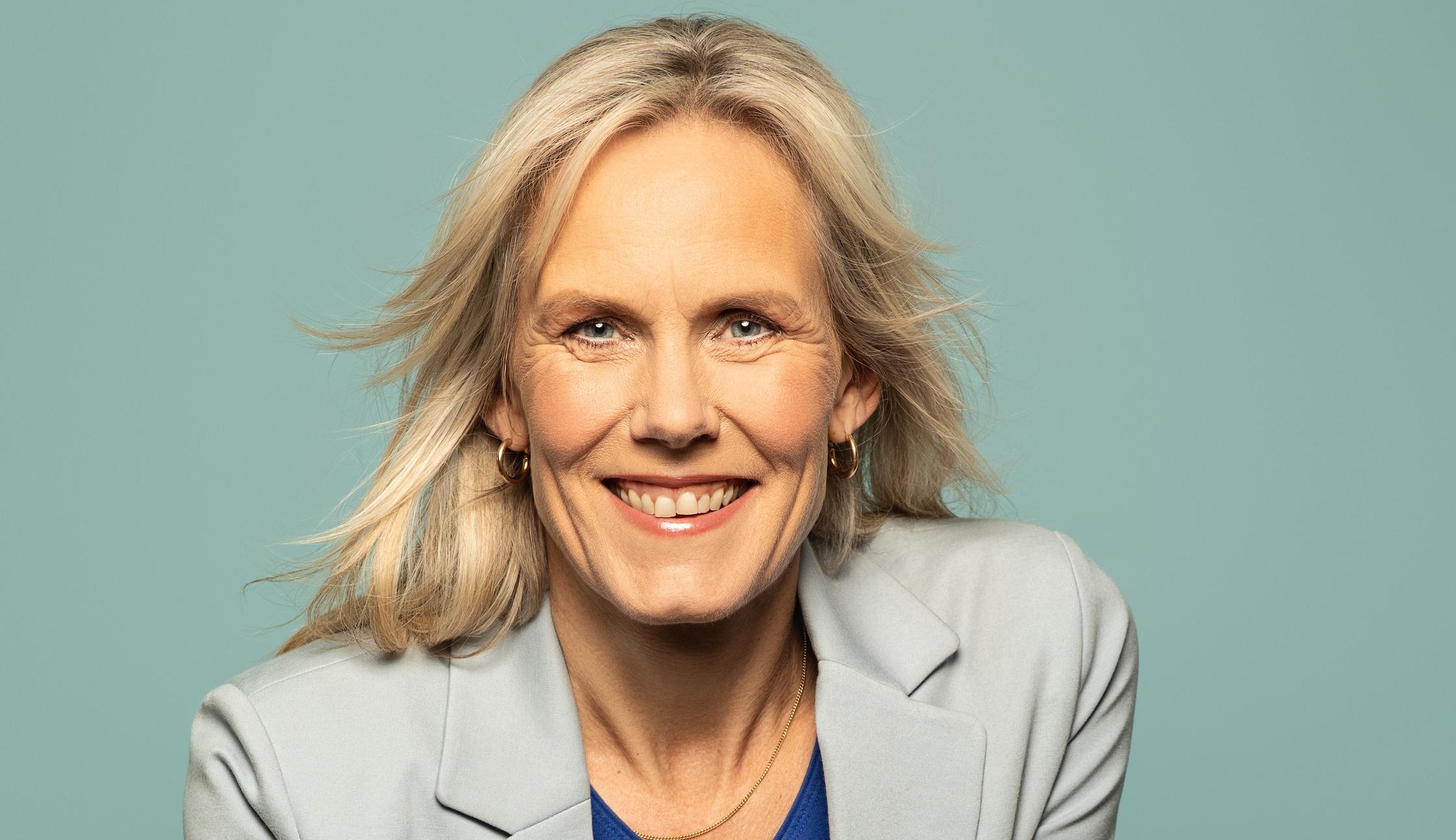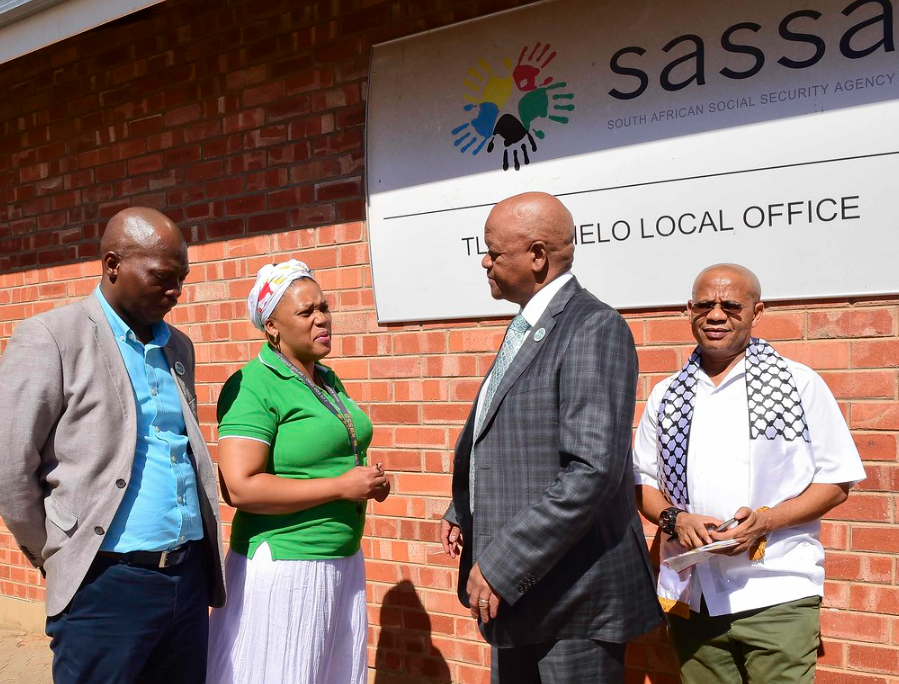“To all young women entering this field: in many places the energy transition is still a men’s world. You will encounter biases and you may need to work harder to proof yourself. The world needs you! “
In the face of mounting grid congestion challenges and the urgent need for sustainable energy solutions, few leaders have mastered the delicate balance between technical innovation and stakeholder collaboration quite like Heleen Groenenberg. As CEO and Advisor on Smart Energy & Grid Congestion at Sustain Brain, Groenenberg has pioneered data-driven approaches to energy systems integration that are transforming business parks across the Netherlands. This month’s cover story explores how her unique background shaped a visionary who is bridging the gap between technical possibilities and practical implementations, and examines the philosophy behind her success in sustainable energy transformation.
A Climate Mission Forged Through Scientific Rigor
Heleen Groenenberg’s journey into sustainable energy wasn’t sparked by a single dramatic moment but developed through a gradual, deepening awareness of our climate crisis. “Climate change was hardly an issue during the 1980s, but it started emerging during my bachelor and beyond,” she reflects. “Very soon it became clear that quick fixes, of the kind that solved acid rain or ozone layer reduction, would not suffice and that a massive reinvention of our energy system would be necessary.”
This realization propelled her academic pursuits, culminating in a PhD focused on differentiating emission reductions among parties to the UN Framework Convention on Climate Change in the years following the Kyoto Protocol. This foundation of scientific understanding, later complemented by an Executive MBA, gave Groenenberg a unique perspective that spans climate science, energy systems, and business strategy.

“Both tracks have been important building blocks,” notes Groenenberg. “My PhD research offered an excellent opportunity for me to work independently and to use and further develop my rigor and creativity. The MBA degree I earned after a good dose of professional experience in climate and energy consultancy. Apart from the immersion in business analytics, finance and strategy, the curriculum opened windows to mainstream business communities, while continuously putting good teamwork, mutual trust and personal development center stage.”
For Groenenberg, sustainable energy isn’t merely about technological solutions—it’s about addressing the fundamental challenge of our time. “The climate crisis very seriously jeopardizes ecosystems, societies and economies around the globe. To safeguard a future for next generations we need to reduce greenhouse gas emissions to zero by 2050 to avoid the most detrimental impacts. Limiting emissions from fossil fuels may well be the hardest nut to crack, but the use of fossil energy is deeply entrenched in our economies.”
This understanding—that despite the challenges, we must reinvent our energy systems—has informed every aspect of her professional life.
Energy Hubs: A Practical Solution to Grid Congestion
At the core of Sustain Brain’s methodology lies a research-backed approach that positions energy hubs not as theoretical concepts but as practical solutions to urgent grid integration challenges.
The Netherlands, like many countries rapidly transitioning to renewable energy, faces significant grid congestion issues. As solar panels and wind turbines proliferate, the existing electricity infrastructure struggles to accommodate fluctuating energy flows. Traditional approaches to grid expansion are costly and time-consuming. Groenenberg’s innovative solution: energy hubs that unlock flexibility at the local level.
“This concerns six pilots for so-called energy hubs on business parks,” Groenenberg explains, describing her projects in Flevoland, Gelderland, and Utrecht. “These pilots are meant to explore under what conditions such hubs may be integrated into the electricity grid. Basically, businesses need to hand in individual grid transportation rights to obtain a shared group transportation agreement with the grid operator.”
What makes this approach revolutionary is its focus on local collaboration rather than top-down solutions. “Entrepreneurs may not always be interested in offering demand side flexibility to a grid operator, as this may impact day-to-day operations while benefits are not considered sufficiently attractive,” Groenenberg notes. “It turns out that entrepreneurs are often more interested in offering flexibility to neighboring companies within an energy hub, than to a remote and anonymous grid operator.”
This insight—that local energy cooperation can unlock flexibility more effectively than centralized approaches—represents a paradigm shift in grid management strategy. It transforms what might otherwise be abstract discussions about grid capacity into concrete community-based solutions.
The Data-Driven Foundation of Energy Integration
Groenenberg’s approach to energy transition stands out for its sophisticated integration of data analytics with practical implementation. Where others might focus exclusively on technology deployment or policy frameworks, she emphasizes the critical role of data in enabling successful energy systems integration.
“It is paramount,” she states when asked about the role of data-driven strategy. “Without good data it is impossible to predict intermittent renewable energy and balance it with demand, or to inform decisions about load shifting. A data-driven strategy is also key to make the most of trading or providing balancing services.”
This focus on data extends beyond operational optimization to influence investment decisions and policy development. “Good data also informs decision-making about new renewable energy projects and their optimal location, based on estimated performance and return on investment. On a higher level, a data-driven strategy helps to inform good policies for emissions reductions and system adequacy.”
Groenenberg’s numerical and analytical skills allow her to translate complex energy challenges into manageable components. “My analytical skills help breaking complex energy problems into several smaller components to derive solutions in steps, and building arguments to eventually arrive at a final conclusion,” she explains. “My numerical skills support this, as they help generating data to support such arguments.”
This methodical approach enables Sustain Brain to develop comprehensive strategies that balance technical innovation with practical implementation—a balance Groenenberg views as essential for successful energy transition.
Case Study: Collaborative Breakthrough in Local Energy Integration
The effectiveness of Groenenberg’s collaborative approach was clearly demonstrated in a case early 2024, when entrepreneurs on a Dutch business park faced a significant hurdle in their efforts to create a collective power hub.
“Entrepreneurs on a Dutch business park were affected by a heavily congested grid”, Groenenberg recounts.
The lack of access to sufficient energy blocked business growth at the estate, frustrating local entreneurs. To address this issue five of them set up an innovative collaboration, an initiative supported by governments and the regional grid operator. By pooling transportation capacities on the grid, and aligning energy use to match available capacity, the entrepreneurs managed to grapple with an overloaded grid. For this a fundamental point to be agreed with the grid operator was how much grid capacity these businesses together could still use throughout the day. Data analysis and a degree of negotiation helped to reach an agreement on this.
As a result, locally generated electricity from solar panels could be used, while businesses could make new investments for further growth. This pioneering project has inspired entrepreneurs on industrial estates across the country to collaborate and safeguard energy security themselves, instead of waiting for grid reinforcement.
This breakthrough exemplifies Groenenberg’s philosophy: sustainable energy integration isn’t just about technology but about bringing diverse stakeholders together to find unexpected solutions. By creating space for genuine dialogue, she enables creative solutions that satisfy both the technical requirements of grid stability and the economic interests of local businesses.
Beyond Technology: The Human Side of Energy Transition
What distinguishes Groenenberg’s work is her recognition that energy transition challenges aren’t purely technical—they are fundamentally human. Her leadership style emphasizes trust, collaboration, and diverse perspectives.
“I believe trust and good collaboration are vital to overcome obstacles and achieve common goals,” she explains. “Rather than building more visions our challenge in the energy transition is creating and implementing good and better strategies. These emerge when multiple viewpoints are considered, so I value diverse perspectives and actively seek input from team members to create supported decisions.”
This collaborative approach doesn’t preclude decisive action. “Yet I am willing to take executive decisions when consensus is not within reach or would take overly long to achieve,” she adds, demonstrating a pragmatic balance between inclusive process and operational efficiency.
Groenenberg’s understanding of stakeholder dynamics enables her to navigate the complex relationships between government, private enterprise, and community interests—relationships that often determine whether energy projects succeed or fail.
“We have a long history of intense stakeholder collaborations, sometimes successful, sometimes less so, and disappointments are not uncommon,” she observes. “For a start, success may look different for a politician, a business owner or a citizen. Next to this, information asymmetries may further complicate things.”
Her solution focuses on relationship-building, identifying overlapping priorities, and creating shared information systems. “Working on systems for shared data collection and analysis, requesting support from trusted independent technical advisors and joint fact finding may support collaborative decision-making,” she notes.
This emphasis on inclusive processes extends to her commitment to diversity and inclusion in energy projects. “Embracing inclusivity and diversity requires action at all levels,” Groenenberg states. “Across a company diversity metrics must be part of project goals and success criteria, and measures must be supported by a budget and due accountability.”
Balancing Innovation with Practical Solutions
In the rapidly evolving field of sustainable energy, there’s often a temptation to chase the latest technological breakthrough. Groenenberg advocates instead for a more measured approach that starts with understanding local needs.
“Technological innovations will definitely get us further, but a technology fixation will not take us where we need to be,” she cautions. “There is no point in rushing to install the latest heat battery on an industrial estate when you’re not sure what problem to solve.”
Her alternative begins with comprehensive analysis: “Instead, make sure to analyse energy use patterns, infrastructure limitations, flexibility potentials, business priorities and so on. Only then it will be possible to design a meaningful local energy system accommodating readily available solutions (more solar, charging infrastructure, a battery) with more advanced solutions.”
This balanced perspective helps Sustain Brain develop energy strategies that are both innovative and implementable—avoiding the pitfalls of either conservative stagnation or impractical technological idealism.
Looking Forward: The Future of Grid Integration
As the energy transition accelerates, Groenenberg sees several emerging technologies that will significantly impact grid integration challenges.
“Energy storage evolves beyond the regular lithium-ion batteries,” she predicts. “Long duration energy storage, for instance in flow batteries or compressed air, will be vital to overcome prolonged periods without wind or solar production.”
She also highlights the potential of sustainable heat solutions: “Also production and storage of sustainable heat will impact grids in a positive way. The Netherlands has hundreds of petajoules available in the underground, in ambient air and in surface waters, and we can make this available using mostly commercial technologies. This will reduce the grid impact from possibly numerous individual heat pumps.”
Vehicle-to-grid technology represents another significant opportunity. “Vehicle-to-grid technology may be very helpful in shaving local peaks from solar production, once protocols for data exchange have been fully developed and implemented,” she notes, pointing to the potential for electric vehicles to serve as distributed energy resources.
These technological trends, combined with innovative financing models, will shape the future of energy systems integration. Groenenberg points to several alternative financing routes that are complementing traditional subsidies: “Green obligations have become a well-established way to raise money for green investments with relatively low rates. Crowdfunding for renewable energy projects is increasingly common too, and a good way to supplement regular bank loans.”
She is particularly interested in the potential of energy cooperatives: “A recent route for financing are energy cooperations investing in assets on behalf of their members. Since these members benefit themselves the cost of capital can be close to zero. So cooperations may well enhance the profitability of renewable energy projects.”
Overcoming Setbacks: A Journey of Resilience
Groenenberg’s path to leadership hasn’t been without obstacles. Her professional journey has included unexpected job loss, legal battles, and periods of professional stagnation.
“My professional journey has been a bumpy ride,” she admits. “Early in my career it took a while before landing in a job that suited me well. After working many years as a proficient consultant I was unexpectedly fired, which fully derailed me. I lost three times in court, and eventually got lost in the ranks of a large corporate, where I could not reach my full potential and eventually experienced a bore-out.”
The decision to establish herself as an independent advisor marked a turning point. “Starting as an independent adviser was a great relief,” she says. This experience taught her important lessons about resilience and career development.
“Resilience isn’t just bouncing back. It’s growing forward and becoming better versions of yourself,” she reflects. “Also, it’s vital to prioritize roles that allow you to use and show your true potential.”
This personal insight informs her advice to young professionals, particularly women, entering the sustainable energy field: “Make sure to develop good depth in one or several areas, to make meaningful contributions to collaborations across disciplines. In addition, mind that the energy transition is increasingly driven by data, so proficiency with data analysis and software will substantially support your value and impact.”
She emphasizes the importance of professional networks and acknowledges the specific challenges women may face in the industry. “To all young women entering this field: in many places the energy transition is still a men’s world. You will encounter biases and you may need to work harder to proof yourself. You may be lonely at times. Connect with other women, either inside or outside your field, to brace for this and become aware of your own unique contribution. The world needs you!”
A Call for Authentic Sustainability
For companies aiming to meet global sustainability goals, Groenenberg has a clear message: authenticity matters. “Stop thinking about compliance or short term problem solving and start making genuine impact,” she advises. “Make sustainability the core of your value proposition and competitive advantage, and use that to innovate and eventually drive business results.”
This approach, she argues, provides both competitive advantage and long-term viability: “This will give you an edge over competitors, and even more importantly a license to operate in the long term.”
Her message reflects a broader philosophy that views sustainability not as a regulatory burden but as a strategic opportunity—a chance to reimagine business models, create new value, and contribute to solving humanity’s most pressing challenges.
The Synthesis of Science and Strategy
As CEO of Sustain Brain, Heleen Groenenberg represents a new kind of energy leader—one who combines scientific understanding with business acumen, technical expertise with stakeholder engagement, and visionary thinking with practical implementation.
Her approach to the energy transition recognizes the complexity of the challenge while breaking it down into manageable components. By focusing on local energy hubs, data-driven decision-making, and inclusive stakeholder processes, she is creating scalable solutions to grid congestion that balance technical requirements with human needs.
In a world increasingly defined by climate uncertainty and energy challenges, Groenenberg’s story reminds us that successful transition requires more than technological innovation—it demands thoughtful integration of diverse perspectives, careful attention to local contexts, and a commitment to meaningful collaboration.
As the Netherlands and other countries continue navigating the complexities of renewable energy integration, leaders would do well to consider Groenenberg’s central insight: lasting success comes not from imposing technical solutions but from creating inclusive processes that unlock local flexibility and foster community-based energy cooperation.
Taking Action: Embracing Data-Driven Energy Integration
In today’s rapidly evolving energy landscape, data-driven energy integration has become an imperative. Organizations without sophisticated data strategies face significant risks:
- Higher failure rates when implementing renewable energy projects
- Greater difficulty balancing intermittent generation with energy demand
- Missed opportunities to unlock local flexibility potential
- Unpreparedness for the challenges of tomorrow’s decentralized energy system
The leaders of tomorrow are those who act today—who recognize data-driven energy integration not as a technical specialty but as a fundamental driver of sustainability, resilience, community engagement, and long-term economic viability.
“Rather than building more visions our challenge in the energy transition is creating and implementing good and better strategies.”
Ready to transform your organization through data-driven energy integration? Visit Sustain Brain’s resource center to access assessment tools, case studies, and implementation guides. Join the growing community of energy innovators creating sustainable local impact with global significance.
The time for energy system transformation is now.







